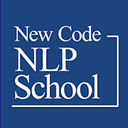●
私たちは今、一人ひとりに個人として固有で特有である自分の経験における更なるフィルタリングまたは変形を認識することを求めています。ここでは、私たちは、個人の歴史(personal history)と呼ばれるものの累積的影響について指摘しています。
それでは、この文脈で、個人の歴史という用語をどのように理解すればよいでしょうか。明らかなことは、全ての自然言語が FA に適用できる変形の豊富なセットを提供しているということです。しかし、私たちが母国語の基礎を習得する時点では、これらの事実を理解していません。実際に起こっていることは、この時点で私たちの生活の中で主要な影響力のある人物−通常は親と原家族のメンバー−の言語能力(またはその欠如)を直感的にモデリングしているということです。これは、母国語によって提供される変形の完全なセットのうち、無意識のうちに小さなサブセット−より具体的には、それらのモデルのサブセット−を採用していることと同じです。このことは、私たちが(多大な個人的な訓練とサポートツールなしには)母国語が提供する選択肢の完全な配列を習得することはめったにないことを意味しています。この状況は、私たち一人ひとりが無意識的に主要なリプレゼンテーショナルシステムを発達させる結果となる無意識モデリングに類似しています。
この言語能力の初期の無意識モデリングは、メタモデルが選択肢を作成するためにどのように機能するかについても説明しています。なぜなら、これは、個人、クライアント、またはユーザーの言語能力のセットに挑戦して拡張するための明示的な方法であるためです。私たちの言語的変形の個人的で限定されたサブセットを、長年にわたって無意識に体系的に自分の経験(FA)に適用することの累積的影響は、私たちがメンタルマップ、または世界についてのモデルと呼んでいるものです。次に、フィードフォーワードのプロセスを経て、これらのメンタルマップは、自分の経験に対する追加のフィルターのセットになります。したがって、私たちの個人的な歴史は、たまたま発展させた言語能力のセットを使用して生涯にわたって行ってきた一般化であるメンタルマップによって、最もよく表現されています。
NLPの多くの生徒は、特にパターン化を効果的に使用するための最初の熱意において、認識論的に奇妙な(そして不可能な)目標に飛びつきます。彼らが達成しようと取り掛かるタスクは、自分自身から全ての知覚フィルターをなくすことであり、彼らはしばしば、それによって歪曲のない世界を認識できるようになるだろうと言います。そのような甘い考えのプロジェクトは、確実に矛盾しています。私たちの種(人間)のメンバーであることの意味の重要な部分はf1 変形として識別したフィルターのセットによって正確に定義されています。実際に自分自身からそのようなフィルター取り去ることが何を意味するのかを知ることは困難です。
私たちの周りの世界の全てのフィルタリングから解放されることは不可能ですが、特定のf2 変形の結果である歪曲を操作することは可能です。すなわち、私たちが子供として(マッピング機能として使用可能な言語パターンの配列から)通常は原家族の限定的なサブセットを選択したという点にもう一度注意を向けます。その無意識の選択の生涯にわたる累積的影響は、私たちのメンタルマップを発達させます。f2 変形に注意を向けると、理路整然とした可能性が現れます。すなわち、意図的にシフトする優れたフィルターとなるよう自分自身を訓練することができるのです。実際、純粋に別の知覚ポジションに入ることは、知覚フィルターをシフトすることと同義です。
個人が知覚フィルターをシフトする技術を習得するために意図的に訓練するとき、その人は選択肢の世界を拡大します。以前は使用できなかった一連の選択肢を体系的に提供するプロセスが備わると、古い文脈で新しい行動を生み出す能力が自ずと現れます。世界についての複数の記述を作成すること、したがってより多くの選択肢を持つことの自然な結果は、与えられたいかなる文脈においても具体的にどのように行動するかについての柔軟性が高まることです。
より多くの選択肢を作成する最も単純な方法−柔軟性のレバレッジポイント−として、次のことを特定できます。
1. 注意をシフトさせること。より具体的には、注意を払う経験の世界の新しい部分を意図的に選択し、どのように具体的にそれらに注意を払うか。
2. いくつかの特定可能なグループの特性と知覚を採用すること。読者にこれを味わってもらう例として、よく熟成したチーズの塊が、次の観点からどう表出されるかを想像してみてください。
a. ネズミ
b. 牛
c. 飢えた学生
d. 乳糖不耐症患者
e. マーケティング会社重役
f. 弁護士
g. 会計士
3. 三重記述によって特定された3つの特権的知覚ポジションの一つから別のポジションに、体系的に知覚ポジションをシフトすること。上記の2.は、一般化された第2ポジションに分類されることに注意してください。
4. 使用可能な言語能力を明示的に操作することにより、多重記述の技術を訓練して開発し展開すること。特に、読者が、記述、解釈、評価のプロセスによってもたらされた差異を使用することをお勧めします。私たちが(ポジションを)占めることを学ぶことが出来る潜在的に無限にある知覚ポジションのセットの中に、上記の3.としてリストされている三重記述と呼ばれる特権的なセットがあることに注意してください。
Multiple Perceptual Positions
We turn our attention, then, to a second pattern that finds explicit form in the new code – the pattern called multiple perceptual positions. In the creation of the new code, the patterning (formats) that confers the ability to occupy multiple perceptual positions is made explicit. It is important to appreciate what this ability represents epistemologically and how it provides leverage points for choice.
In the epistemology developed at the beginning of Whispering and in other places throughout the book, we have made the point that what we normally refer to as the world is a fundamentally transformed set of representations (FA). Prior to our gaining access to it, the data streaming in from our receptors has been modified by the neurological transforms that define the human nervous system. We captured this point by making the provocative statement that Korzybski was too conservative: not only is the map not territory, but his territory isn't even the territory. We went on to argue that after First Access, we typically apply a second set of transforms that are linguistic in nature (or derivative of linguistic mappings).
We are now asking you to recognize a further filtering or transformation of our experience, unique and specific to each of us as individuals – here we are pointing to the cumulative effects of what we call our personal history.
How, then, are we to understand the term personal history in this context? What is clear is that every natural language offers a rich set of transforms that can be applied to FA. However, at the point when we master the fundamentals of our native tongue, we have no appreciation of any of these facts. What in fact happens is that we intuitively model the linguistic competencies (or lackthereof) of the major influential figures in our life at this point−usually our parents and members of our family of origin. This is equivalent to saying that out of the full set of transforms offered by our native language, we unconsciously adopt a smaller subset – more specifically, those of our models. This implies that we rarely (without great personal discipline and supporting tools) come to a mastery of the full array of choices offered by our native tongue. The situation here is analogous to the unconscious modeling that results in each of us developing an unconsciously preferred representational system.
This early unconscious modeling of linguistic competencies also explains how the meta model functions to create choice - as it is an explicit method for challenging and expanding the set of linguistic competencies of the individual, client or user. The cumulative effect of unconsciously and systematically applying our personal limited subset of linguistic transforms to our experience (FA) over years is what we call our mental maps or models of the world. In turn through the process of feed-forward, these mental maps become an additional set of filters on our experience. Thus, our personal history is best represented by the mental maps that are the generalizations that we have made over our lifetime, using whatever set of linguistic competencies we happen to have developed.
Many students of NLP, especially in their initial enthusiasm for the effective use of the patterning, seize upon an epistemologically peculiar (and impossible) goal. The task they set about to accomplish is to free temselves from all perceptual filters, often stating that thereby they will appreciate the world without distortion. Such a naive project is surely incoherent. A significant part of what it means to be a member of our speciesis precisely defined by the set of filters that we identified as the f1 transforms. It is difficult to know what it might mean to actually free one's self of such filters.
Although, it is not possible to free one's self from all filtering of the world around us, it is possible to manipulate the distortions resulting from specific f2 transforms. We direct your attention once again towards our previous point, namely, that we as children selected (from the array of linquistic patterns available to us as mapping functions) a limited subset normally those of ourfamily of origin. The cumulative effects over a lifetime of that unconscious selection lead to the development of our mental maps. Focusing our attention on the f2 transforms, a coherent possibility presents itself; namely, that one can train oneself to be excellent at deliberately shifting filters – indeed, to genuinely enter into another perceptual position is synonymous with shifting perceptual filters.
When an individual deliberately trains himself to master the art of shifting perceptual filters, he expands his world of choice. Equipped with a process to systematically offer to himself an array of choices that were previously unavailable, the ability to generate new behaviors in old contexts manifests itself. A natural consequence of creating multiple descriptions of the world−hence more choice - is more flexibility about how specifically one may act in any given context.
Among the simplest methods to create more choice - a leverage point for flexibility - we can identify the following:
1. shifting attention – more specifically, deliberately selecting new portions of the world of experience to attend to as well as how specifically we attend to them.
2. adopting the characteristics and perceptions of some identifiable group. As an example to give the reader a taste of this, imagine what a well-aged hunk of cheese represents from the point of view of:
a. a mouse
b. a cow
c. a starving student
d. a lactose intolerant patient
e. a marketing executive
f. a lawyer
g. an accountant
・・・
3. systematically shifting perceptual position from one to another of the three privileged perceptual positions specified by Triple Description. We would like to note here that number 2 above could be classified as a generalized 2nd.
4. developing and deploying with discipline the art of multiple description through the explicit manipulation of the linguistic competencies available. In particular, we are suggesting that the reader use the differences proposed by the processes of description, interpretation and evaluation.
Note that within the potentially limitless set of perceptual positions we can learn to occupy, there is a privileged set that we call Triple Description, listed as number 3 above.
('Whispering in the Wind' p.246-248)
Amazon:
Carmen Bostic St. Clair
John & Carmen Enterprise
NLP共同創始者ジョン・グリンダー博士認定校
ニューコードNLPスクール
記事更新日:2022/05/05


















































































